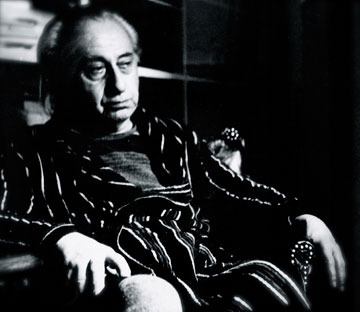BACKGROUND
Mime is the most ancient performing Art in the world and, still today, attracts people in a very deep, intuitive way. Why? In its portrayal of emotion, thought and experience through the body, mime transcends cultural barriers because it is based on expression and not on appearance. Mime is a spontaneous language.
History
Historically, mime has passed through many different forms, from Primitive Dance to Greek and Roman Pantomime, from Commedia del Arte to the tradition of Debureau, from Asian Theatre to the Russian and Polish Schools of Mime, from the Music hall and Vaudeville to the Cinema... Over centuries, in both the west and east, many artists and masters contributed to the evolution of this art form. The art of mime is a multi-faceted world, at times totally silent and at others welcoming the use of spoken text and music.
Etienne Decroux
In the 20th century, Etienne Decroux (1898-1991), student of Jaques Copeau, actor with Charles Dullin, Louis Jouvet, Gaston Baty, Antonin Artaud, Marcel Carne...) known as the "Father of Modern Mime and one of the great luminaries of the theatre world" (Sunday Times), gave Mime a true autonomy with a specific vocabulary, Repertoire and philosophy. He invented the most modern form of mime, "Dramatic Corporeal Mime", an innovative method and precise technique focusing on the vital importance of the body and physical action in theatre.
To many theatre historians, Etienne Decroux belongs to that family of Director/Pedagogues such as Gordon Craig and his theories of the super marionnette, the biomechanics of Meyerhold, Stanislavsky's actor as the master of physical action, Chekov’s psychological gesture, Grotowski's laboratory and the visions of Artaud.

The Difference
The difference is that Etienne Decroux is the only one to affirm that corporeal expression is not only the base of theatre, but also, more importantly, a new, independant, theatrical art form. "Mime has better things to do than complete another art." (E.D.) He went further then exploring exercices for actors by creating a Repertoire of physical theatre pieces which stand apart from any adaptations of written plays or literary texts. "The theatre will only be worthy of it's name when the one who acts breaks free from the one who writes. First one must improvise without even knowing on what. Then, one must find a theme, then a second and then a third. In other words, one must act in order to think. By putting a logical order to ideas encountered through movement, a piece will emerge." (E.D.) This Repertoire is alive and evolving today. It is being taught and performed by a new generation of performing artists inspired by Decroux's adage, "making visible the invisible."
